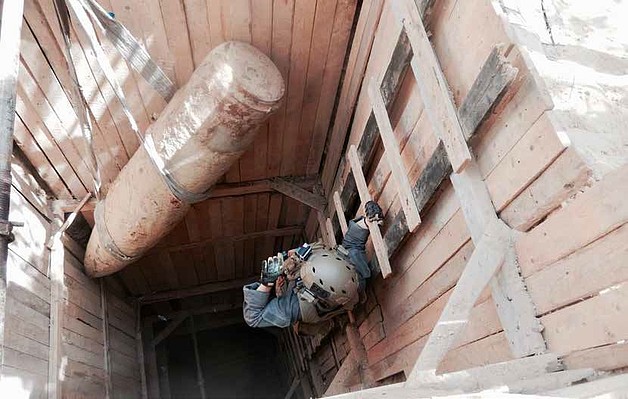End of major aerial bomb clearance operations in Gaza
In April 2017, the United Nations Mine Action Service (UNMAS) cleared the last known accessible aerial bomb in Gaza, marking an important milestone in addressing the legacy of unexploded ordnance contamination in Gaza. Since the 2014 conflict, UNMAS has cleared and destroyed 29 metric tonnes of explosive material from 149 unexploded aerial bombs. This critical work protects both Gaza communities directly impacted by the presence of unexploded ordnance and the wider community through the removal and destruction of explosive materials which could be harvested and reused for improvised explosive devices.
There have been 280 victims of ERW-related accidents in Gaza verified by UNMAS since 2009 as listed below. Most ERW victims verified by UNMAS were related to contamination following the 2014 conflict.

The presence of explosive hazards within destroyed or damaged buildings impedes the clearance of destroyed buildings, reconstruction and socio-economic development. With reconstruction and rehabilitation projects ongoing, it was imperative that both buried and surface-lying aerial bombs were cleared to avoid accidental detonation of unexploded ordnance. UNMAS has cleared 136 hazardous sites suspected of harboring deep buried air-dropped munitions to allow reconstruction to proceed safely and without delay.
While clearance of the last known accessible aerial bombs is an important achievement, as in any post-conflict environment, unexploded ordnance will continue to be unearthed and discovered many decades after the conflict has ended. This residual threat from undiscovered contamination and the possibility of renewed escalation of hostilities necessitate a continued, albeit scaled-down, UNMAS capacity. For this reason, UNMAS will maintain a minimal presence to continue to support the humanitarian and development community, including emergency preparedness.

The clearance of unexploded bombs has allowed a sense of security to return to families and communities living, farming and building in areas they knew – or feared - to be contaminated. For example, reconstruction workers were unable to safely clear the collapsed remains of a three-story property belonging to Ibrahim Mafouz al Farra, leaving the three families who had lived there internally displaced. UNMAS determined that multiple bombs had landed on the property. After weeks of careful rubble removal, an UNMAS explosive ordnance disposal technician working on the site reached the rear of an unexploded 227 kg aerial bomb at 11 vertical metres underground. He found the fuse unit “armed” and solidly jammed in the body of the bomb due to deformation upon impact. Following the clearance of this and one other bomb found at the same location, al Farra and his neighbors were able to begin rebuilding their homes. As former Secretary General Ban Ki-Moon has noted: “Mine action is an investment in humanity. It helps nurture peaceful societies where those in need can receive aid, and refugees and internally displaced persons can safely return home, and children can go to school”.
* This article was contributed by UNMAS









